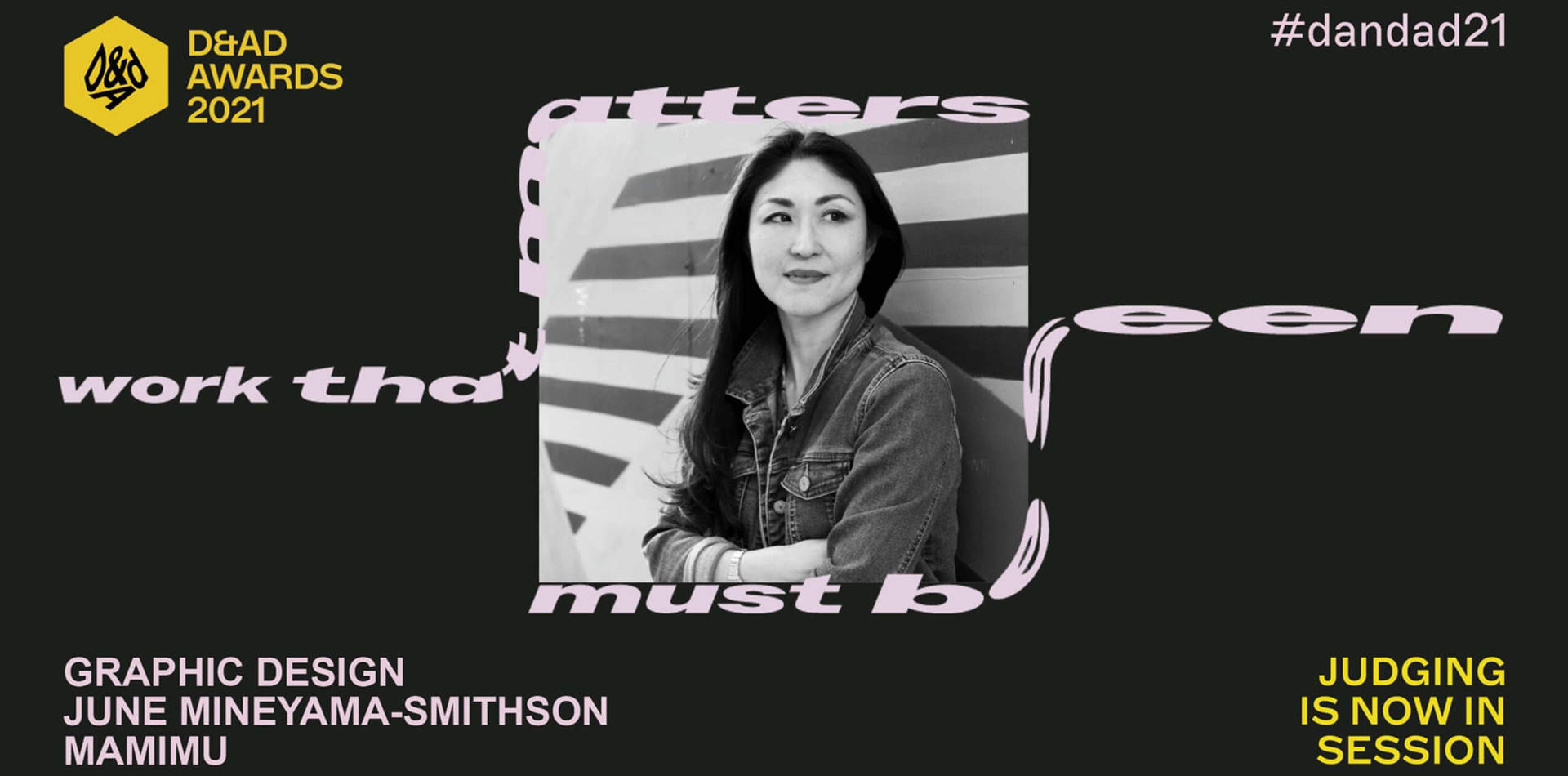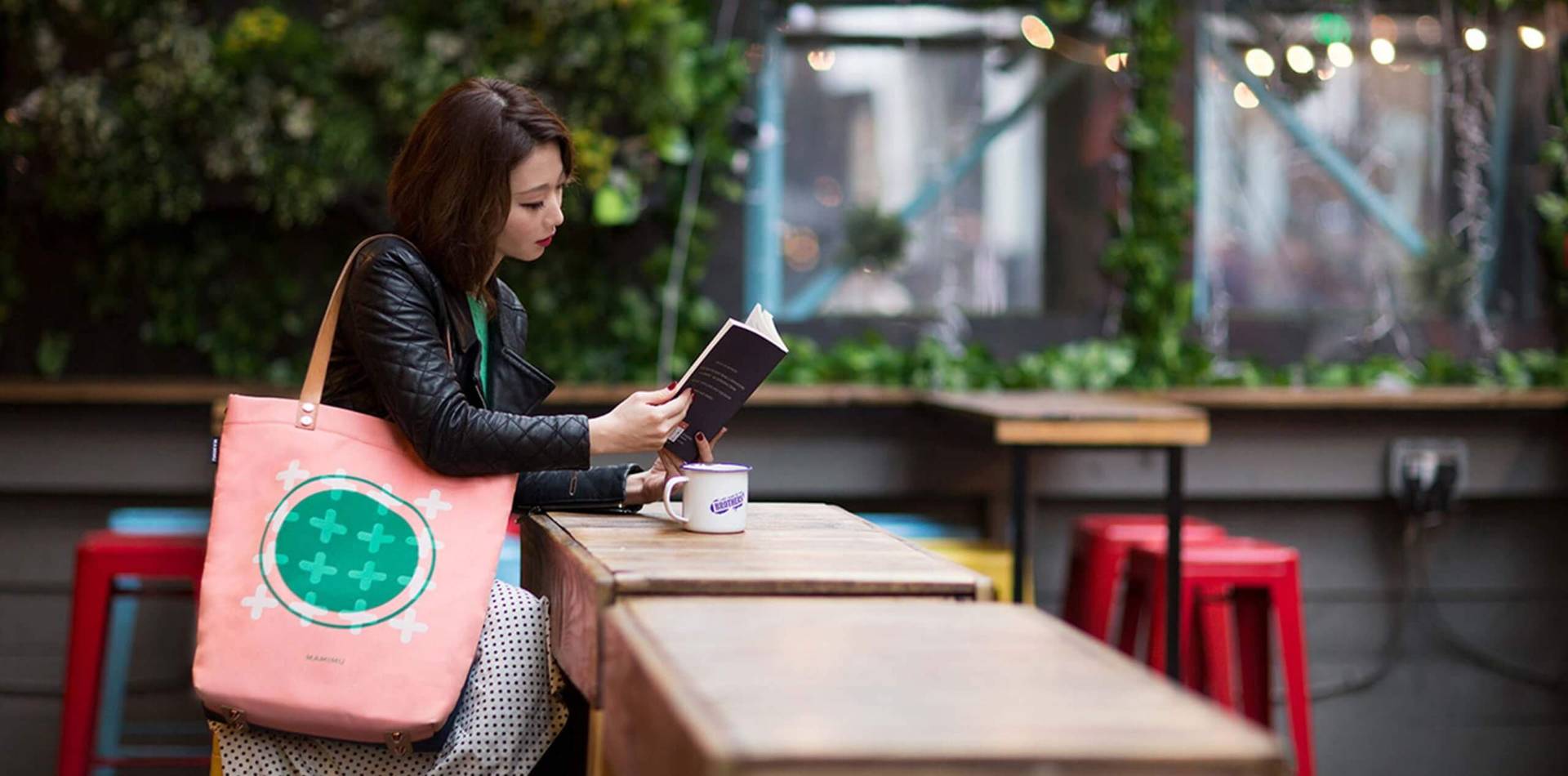MAMIMU (aka June Mineyama-Smithson) is a London-based designer and visual artist on a mission to inject optimism into the world. Combining the philosophy of Japanese Kimono artisans and Postmodern wit, she creates bold joyful patterns inspired by the hidden delights she discovers in everyday landscapes in cities such as London, Tokyo and New York, and wherever else she visits.
June’s passion for colour and shapes started during her childhood in Tokyo, where surrounded by bold joyful aesthetics, she was particularly drawn to the groovy patterns of the late 70s and the bright colours of the 80s. Her work has always encompassed the optimism she felt as a child mixed in with a contemporary twist, and has been featured internationally on Creative Boom, SCMP, Cow Parade Niseko and most recently ITV.
As well as being an internationally known artist and designer, June is also a guest lecturer at University of the Arts London, D&AD judge, speaker at YOOX Net-a-Porter and a mentor at the London College of Communication and the London chapter of Ladies, Wine & Design. As she tells us: “I would not be where I am today without the amazing people who helped me and if I can help other people by just passing on my knowledge, why wouldn’t I? No one needs to struggle alone.”

We caught up with June to find out more about her career path, some of her favourite projects, and words of advice to those just starting out in the industry.
When did your interest in creativity begin and why did you decide to become an artist and graphic designer?
My grandfather was a calligrapher and my uncle was an accomplished screen print artist who once received an award from the Tokyo Mayor. When I was younger, I happily drew Hello Kitty and My Melody all day at Kindergarten and enjoyed art at school; despite all this, I didn’t get into the creative industry straight away.
I studied English Language and Linguistics at a Catholic college in Japan (think singing sister with a guitar and Noam Chomsky) and got my first job at an airline company as an OL (Office Lady, Japanese term for a clerical worker) in uniform, because I thought that’s what I should be doing — something ‘proper’.
But I got bored of the day job fairly quickly and took an intensive evening course to become a web designer. Being a web designer was great, but I felt increasingly that I wanted to study a broader aspect of graphic design and that’s when I decided to study Graphic Design in London.
You’ve been involved in some inspirational projects, including working with ITV and being a D&AD judge. Can you tell us a bit about how you got to where you are now in your career?
I enjoyed working as a freelance graphic designer in agencies like Wolff Olins and Moving Brands, but after I had my son the 9–6 style of work just didn’t fit our family life anymore. I was struggling to find a new direction and my mentor Amanda said “June, you should sell yourself as an artist because you as a person have so much more to offer than your design or product alone.”, That’s when MAMIMU became my artist-name rather than a brand.
Although I struggled massively with imposter syndrome, I kept telling people (and myself) “I am an artist” and started self-initiated projects. It was a classic fake-it-till-you-make-it scenario, but I am grateful that now I’m blessed with these wonderful opportunities thanks to my mentor’s belief in me.
We love the collaborative project you worked on for ITV’s Mental Health Awareness Week 2021 around injecting optimism into the world? What was the overall aim of the project and what was it like to work with Dr Tara Swart?
ITV Creates was certainly a dream project from start to finish. I was approached by ITV as 1 of 12 artists to create the main channel’s idents. I had a vision of creating ultimate optimism by combining art and science. I told ITV that I wanted to collaborate with either a neuroscientist, psychologist or sociologist, and as if by magic I was matched with a neuroscientist Dr Tara Swart, who was absolutely amazing and fun to work with. I asked her lots of questions like: “What movement would make us feel optimistic?” and “Why are we attracted to the sun?” And she told me it’s all down to D.O.S.E.: Dopamine, Oxytocin, Serotonin and Endorphins, the happy hormones in our brain. The result was a series of idents that induce optimism every time you viewed them.
Your project for Coventry UK City of Culture 2021 regeneration programme is also amazing. How did the project come about and what creative approach did you take?
I was approached by Coventry when we started to come out of Covid restrictions. This was also after we experienced movements like Black Lives Matter and Stop Asian Hate. I had mixed feelings of both excitement and anxiety. My installation ‘Infinity Doors’ invites the viewer to embrace the unknown — a concept inspired by Abraham Lincoln’s quoted remark: “I don’t like that man. I must get to know him better.” The doors represent barriers and prejudice that we break through one by one. It takes courage to step outside of the comfort zone, but by doing so we can step towards harmony.
Tell us about any favourite projects that you’ve worked on and why they’re important to you.
MAMIMU Laptop tote bags — my very first product that I launched while I lived in Hong Kong. I consulted two product designers and a high-end bag inspector in Japan to create the ultimate laptop tote bag that is both stylish and functional. It’s durable, secure and lightweight. I’m super proud of them and use the tote myself daily.
Lockdown Mindscape is a self-initiated visual documentation of how we experienced the global pandemic in 2020. I asked friends in various international locations to send their physical and introspective views. Although we were in lockdown, I loved connecting with people though this project, it was quite special.
Has being a woman of colour impacted your career?
Hard to say because I’ve never experienced anything other than being me. But coming from Tokyo – where I grew up being told that modesty and harmony should come before the individual — it took me a while to adjust to London life, where people size you up as soon as you meet and you have to stand tall so that people don’t walk all over you.
I think I have gradually built confidence and started to believe that my opinion matters as much as that of others in both professional and social contexts, out of necessity more than anything.
Do you have any thoughts on how we can counteract the gender pay gap imbalance and how few women progress into senior positions in the design industry?
It’s a big social issue but I believe that all women have the power to ask for a promotion, a raise and charge more. I’ve heard of this exercise where you look at the mirror and say the amount of money you want to ask, then increase the amount more and more until you laugh because you think it’s ridiculously high. Dare yourself and ask the amount just before you laughed.
It takes courage but if you’ve been working hard and constantly upping your game, you will find confidence within. And remember by doing so, you are helping other women by nudging up the average. That’s sisterhood.
Can you tell us a bit about your experiences of lecturing, mentoring, and speaking at events and why it’s important to you?
I volunteer as a mentor at London College of Communication and Ladies, Wine & Design and I do guest lectures in several places. I would not be where I am today without the amazing people who helped me and if I can help other people by just passing on what I’ve learnt, why wouldn’t I? No one needs to struggle alone. If my mentees outsmart me, I can happily say I’ve done a good job.
What are your plans for the future? Where do you see yourself in five years?
I would love to do more public art projects and other large-scale collaborations to fulfil my mission; spread optimism in the world. My ultimate goal is to be successful enough to make my husband retire, although he has no desire to retire! Not sure if I can make that happen in five years but I’m working on it.
Do you have any words of advice for women just starting out in their career in the design industry?
I know it’s not easy to get a job in the current climate but don’t get disheartened. Don’t take rejection as a reflection on your talent or personality. Think of it more like dating — it’s a two-way street. The company needs certain skills, you have talent and skills to offer but they may not always match, that’s all. I think it does help though if you make it clear what you can bring to the table.
If you are lost and frustrated, you can get a portfolio review through The Dots or Ladies, Wine & Design.
Lastly, work on self-initiated projects to invite more opportunities that you would love. I wrote an article about why successful creatives make time for self-initiated projects, I hope you find it helpful.
Visit:
Follow:
Article by Helen Tong









